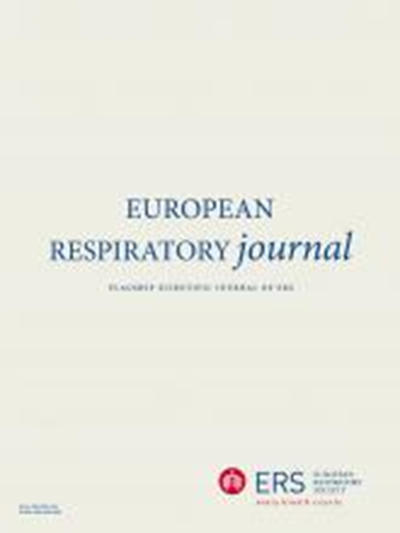欧洲呼吸学会关于阻塞性睡眠呼吸暂停(e-Sleep)先进远程医疗的声明。
IF 21
1区 医学
Q1 RESPIRATORY SYSTEM
引用次数: 0
摘要
远程医疗(TM)作为一种远程医患互动的手段,在几乎每个领域都越来越受欢迎,(呼吸)睡眠医学也不例外。由于阻塞性睡眠呼吸暂停(OSA)是一种慢性疾病,需要持续治疗和监测治疗成功,远程信息通信可能有助于建立诊断和治疗策略。本声明总结了TM治疗OSA的证据和疗效。一个跨学科的欧洲呼吸学会(ERS)工作组(TF)基于系统搜索和两步筛选过程(标题/摘要和全文)评估科学文献。虽然TF没有对临床实践提出建议,但它描述了目前TM在OSA中的应用。文献显示,TM已经在OSA管理的不同领域进行了研究,具有潜在的益处。TM也是提供PAP治疗相关大数据的主要研究工具。与传统的面对面接触相比,TM的依从性相似或更好。基于tm的有针对性的故障排除和基于个体患者数据的支持,以及通过智能手机应用程序或指导网站的组合,是可行和有效的。越来越多的证据表明,传统医学可能具有成本效益。然而,数据并不总是支持员工通过基于tm的解决方案节省时间。传统疗法的潜在好处包括改善获得卫生保健的机会,并提高对(慢性病)治疗计划的依从性。应该将收益与TM的总体成本和与次优遵从性相关的风险进行权衡。本文章由计算机程序翻译,如有差异,请以英文原文为准。
European Respiratory Society statement on advanced telemedicine for obstructive sleep apnoea (e-Sleep).
Telemedicine (TM) as a means of remote patient-physician interaction is gaining popularity in nearly every field, and (respiratory) sleep medicine is no exception. Because obstructive sleep apnoea (OSA) is a chronic condition, and requires a continuous treatment and monitoring of therapy success, telematic communications could be useful to establish diagnostic and therapeutic strategies. This Statement summarises the evidence and efficacy of TM options in OSA. An interdisciplinary European Respiratory Society (ERS) Task Force (TF) evaluated the scientific literature based on a systematic search and two step screening process (title/abstract and full text). Although the TF does not make recommendations for clinical practice, it describes its current practice of TM applications in OSA. Literature shows that TM has been studied in different areas of OSA management, with potential benefits. TM also served as a major research tool to provide big data related to PAP therapy. TM results in similar or improved compliance when compared with traditional face-to-face encounters. TM-based targeted troubleshooting and support based on individual patient data, and a combination via smartphone apps or coaching websites, are feasible and effective. Expanding evidence suggests that TM is likely cost-effective. However, data do not consistently support staff time savings through TM-based solutions. The potential benefits of TM include improved access to health care, and increased adherence to (chronic illness) treatment plans. Benefits should be weighed against the overall costs of TM and risks related to suboptimal compliance.
求助全文
通过发布文献求助,成功后即可免费获取论文全文。
去求助
来源期刊

European Respiratory Journal
医学-呼吸系统
CiteScore
27.50
自引率
3.30%
发文量
345
审稿时长
2-4 weeks
期刊介绍:
The European Respiratory Journal (ERJ) is the flagship journal of the European Respiratory Society. It has a current impact factor of 24.9. The journal covers various aspects of adult and paediatric respiratory medicine, including cell biology, epidemiology, immunology, oncology, pathophysiology, imaging, occupational medicine, intensive care, sleep medicine, and thoracic surgery. In addition to original research material, the ERJ publishes editorial commentaries, reviews, short research letters, and correspondence to the editor. The articles are published continuously and collected into 12 monthly issues in two volumes per year.
 求助内容:
求助内容: 应助结果提醒方式:
应助结果提醒方式:


